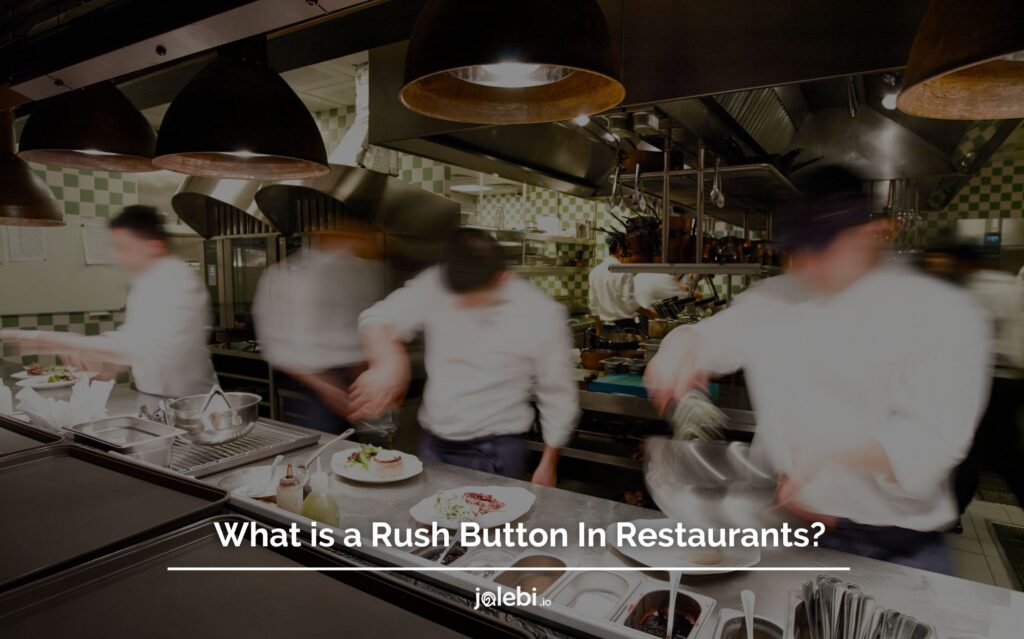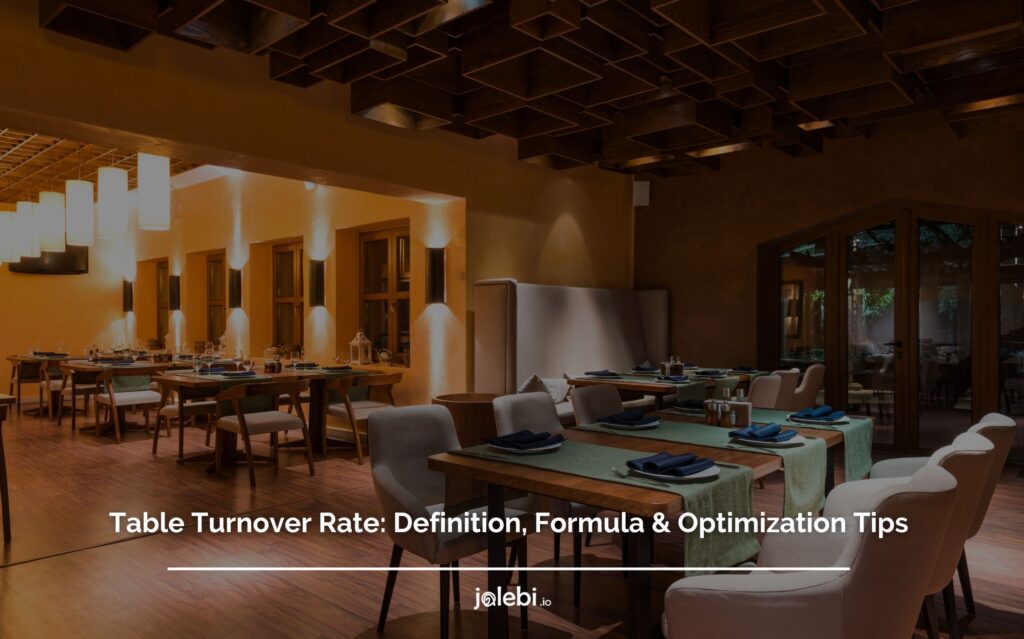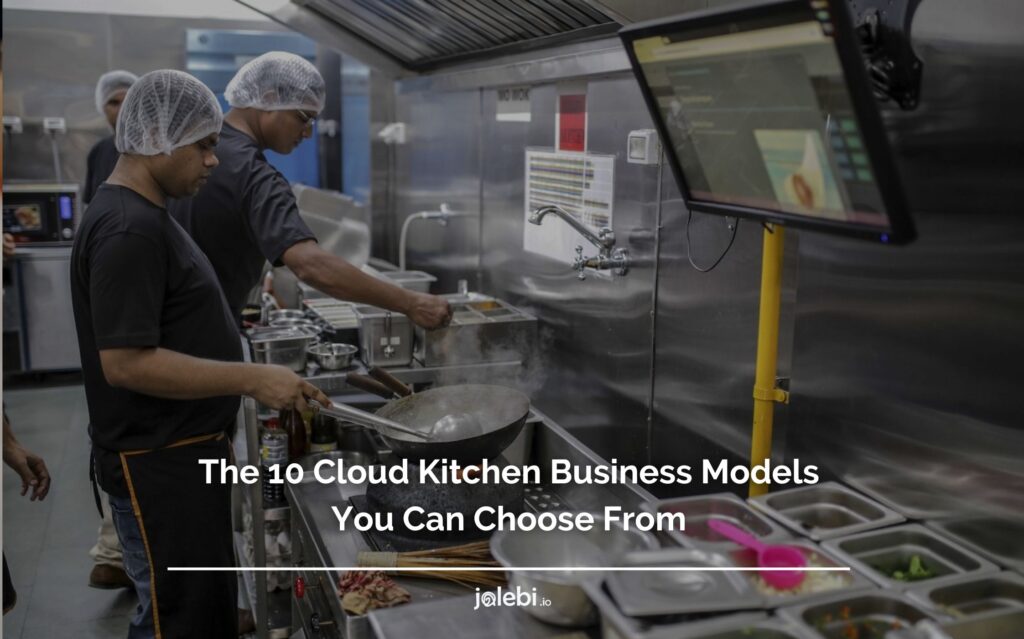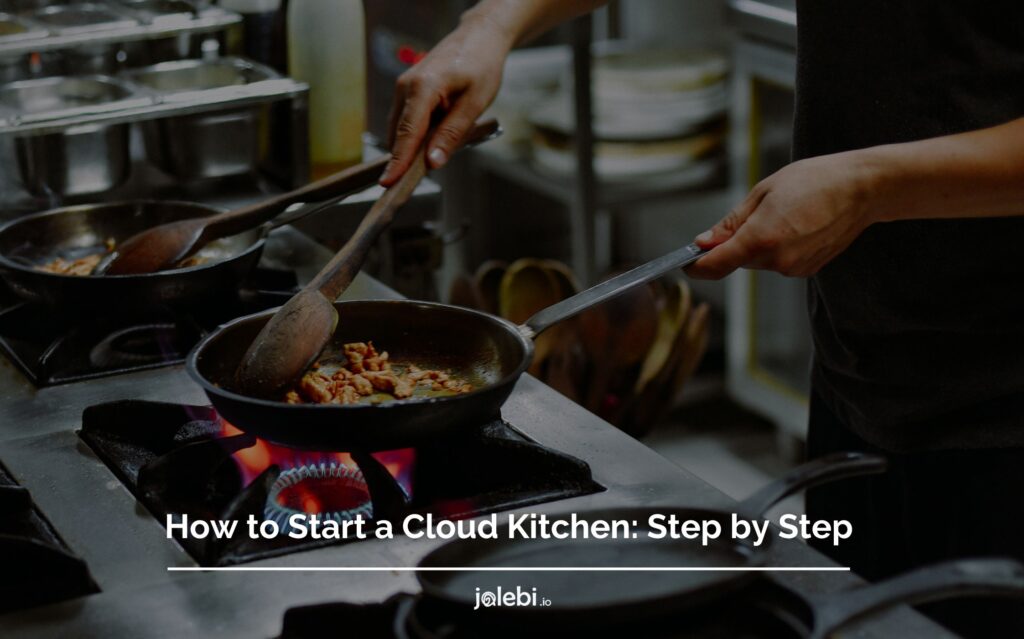Table of Contents
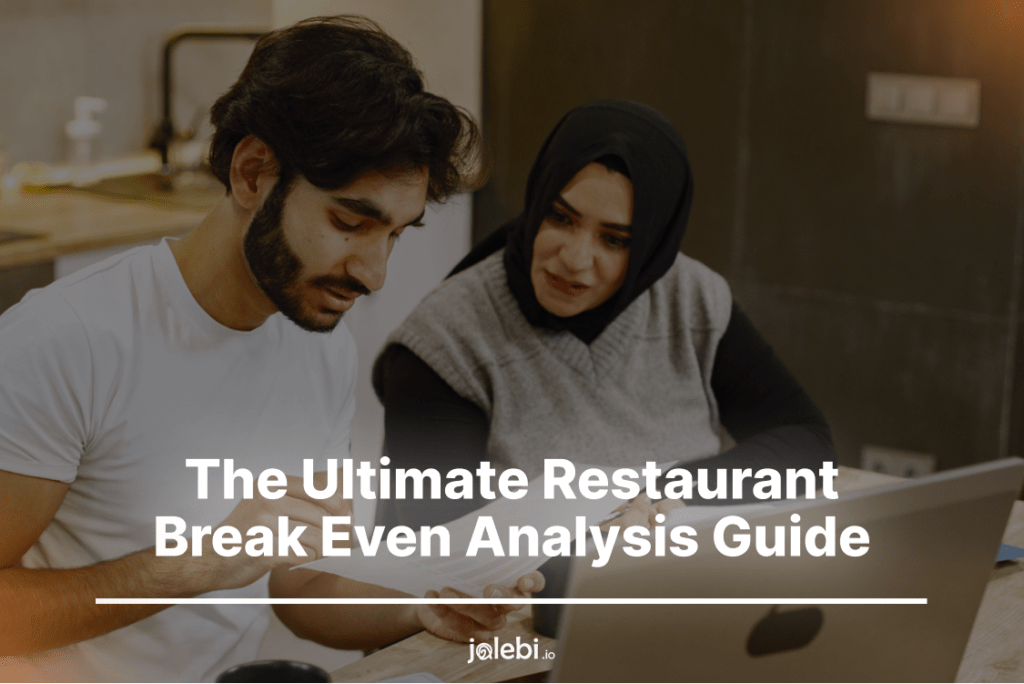
Break even analysis is an important KPI for restaurants to track. It is the sales figure needed for a business to break even or cover all overheads including COGS.
Successful restaurants regularly review their finances to better manage their establishment in today’s competitive hospitality environment proactively.
Financial calculations and formulas can be intimidating when analyzing your costs. The good news is that once you understand how to interpret your data, you can take control of restaurant costs, and day-to-day operations, and take control of your financial health.
As the region’s population and tourist influx continues to soar, the demand for delectable dining experiences is only going to grow leading UAE food service market to an expected growth of CAGR of 7.02% by 2027.
Discover how determining a break-even point can help gauge your restaurant’s health.
Even better! You can level the playing field and get ahead of the game by leveraging jalebi.io as your partner!
What is a Restaurant’s Break-Even Point (BEP)?
The restaurant break-even point in a restaurant is when costs and revenue are equal. It means the restaurant is neither making a profit nor a loss during that time. It means the restaurant is neither making a profit nor a loss during that time.
After surpassing the restaurant break-even point, the restaurant starts making a profit.
Before that, it is operating at a loss. The break-even point can be monitored using historical data.
Accurate accounting is necessary for the data used to calculate the restaurant break-even point to be reliable.
By accurately tracking their expenses and revenue, restaurants can determine the point at which they start making a profit. This information is important for financial planning and decision-making.
It allows restaurant owners to understand their business’s financial stability and adjust their strategies accordingly.
By knowing restaurant break-even point, restaurants can set realistic goals and make informed pricing, costs, and operations decisions.
Understanding Break Even Analysis For Restaurants
A break even point can be defined mathematically as when revenue equals costs.
As a measure of how much revenue you need to cover all your restaurant’s fixed and variable costs over the course of a specific period, it represents a simple equilibrium where your business does not make or lose money.
You can use the break even analysis for restaurants to determine how much revenue your restaurant generates or further break down to Average Check and Number of Guests required per day, hour, etc. or number of products you need to sell to reach your target.
Restaurant owners can use this analysis to set sales targets, determine menu pricing strategies, and manage restaurant expenses.
Calculating the break-even analysis for restaurants by week, day, or shift can quickly evaluate where you are excelling or falling short.
On the other hand, a break-even point is a data point based on historical data that can be used to monitor real-time performance.
For a break-even point for restaurant to be truly informative, a restaurant must practice accurate accounting to inform the data used to calculate its break-even point correctly.
How to Use a Restaurant’s Break-Even Analysis
A break-even analysis for restaurants is useful for making decisions in the restaurant industry. The analysis can help set sales goals and determine menu prices.
When calculating restaurant break-even analysis, restaurant managers can use the results to set goals. These goals can be daily, weekly, monthly, or annual and can relate to the number of customers served or the quantity of a particular item sold.
If the sales goals seem unreachable, managers have two options. They can either reduce costs or raise prices.
For instance, the manager of a pizza shop can adjust the prices of slices of pizza to find sales numbers that are more attainable. These adjusted prices can then be added to the restaurant’s point-of-sale system.
Using a restaurant break-even analysis can provide valuable insights into a restaurant’s financial performance.
By setting sales goals and adjusting menu prices accordingly, managers can make informed decisions that help the restaurant succeed.
Overall, the restaurant break-even analysis is a valuable tool in the restaurant industry. It allows managers to set achievable goals and make adjustments to ensure profitability.
Doing The Math
Restaurant break even analysis focuses on a key metric: break even point. Operators can use this analysis to set sales targets, control costs, and achieve profitability and business growth targets.
To calculate your BEP, you will need the following three values:
1. Total Fixed Costs For A Restaurant
Within a relevant range of production, fixed cost for a restaurant does not change.
To determine the point at which your restaurant breaks even, you have to account for the various fixed costs your restaurant incurs over a month.
Rent, insurance, advertising, taxes, utility bills, and everything else that doesn’t depend on sheer production and efficiency are all included in these fixed costs for a restaurant.
A simple way to think about it is that you’ll have to spend a certain amount of money no matter how well or how poorly your month goes.
Here’s a quick overview of these fixed costs for a restaurant:
- Rent
Rent is one of the most significant fixed costs for a restaurant.
Whether the establishment is located in a bustling city center or a suburban neighborhood, rent typically remains the same month-to-month, unaffected by how much business the restaurant does.
- Taxes
Local, state, and sometimes federal taxes can apply to restaurants. These might include property taxes or certain operational taxes.
While some taxes, like sales tax, might fluctuate based on sales, others remain constant.
- Utility Bills
Although utility consumption, such as electricity and water, can vary (which might make them seem like variable costs), many restaurants have a relatively stable utility consumption pattern, especially if their operational hours and business levels remain consistent which makes it a fixed cost for restaurants.
As such, many establishments might consider utility bills as one of their fixed costs, though this can vary between restaurants.
A simple way to think about it is that you’ll have to spend a certain amount of money no matter how well or how poorly your month goes.
2. Total Sales
The jalebi.io dashboard, for instance, makes it easy to pull up historical revenue numbers immediately from your bar inventory software.
3. Total Variable Costs For A Restaurant
As a result of changes in production, the total variable costs for a restaurant vary in direct proportion to those changes in raw materials and labour.
Here are some of the variable costs for a restaurant that you should be familiar with:
- Ingredients
Perhaps the most common variable costs for a restaurant are the costs of ingredients. These costs fluctuate based on the volume of dishes prepared and sold.
For example, if a restaurant serves more plates of a particular dish, it will naturally require more ingredients, leading to a rise in costs.
Additionally, the costs of ingredients can vary based on seasonal availability or market fluctuations.
- Delivery Or Travel/Vehicle Expenses
With the rising trend of food delivery services, delivery or vehicle expenses have become a significant variable cost for restaurants. These costs are directly related to the number of deliveries made.
The more delivery orders a restaurant completes, the higher the expenses for fuel, vehicle maintenance, or payment to third-party delivery services.
- Utility Costs
While utilities are a constant necessity for restaurant operations, the amount consumed varies.
On busier days, a restaurant might use more electricity for lighting or kitchen equipment, more gas for cooking, and more water for cleaning and cooking.
Hence, utility bills can vary month-to-month, marking them as variable costs for a restaurant.
Even though it is a pretty simple step for established businesses, it can be quite challenging for newly opened businesses due to a lack of information, such as average monthly sales and visitors.
You will have to extract the necessary data and generate averages (visitors/sales) to obtain a relative result.
Calculating a restaurant’s break-even point involves determining the level of sales necessary to cover both fixed and variable costs, resulting in neither a profit nor a loss.
Steps & Formula
Here’s a step-by-step guide on how to calculate the break-even point:
Formula:
The break-even point can be calculated using the following formula:
Break-Even Point = Total Fixed Costs / ((Total Sales – Total Variable Costs) / Total Sales)
Steps:
- Identify Fixed Costs: Fixed costs are expenses that do not change with the level of production or sales. Examples include rent, insurance, salaries, and utilities.
- Determine Total Variable Costs: Variable costs are expenses that fluctuate with the level of production or sales. Examples include ingredient costs, labor costs, and utility costs directly related to production.
- Determine Total Sales.
- Apply the Formula: Substitute the values into the break-even formula
- Understand the Results: the break-even point represents the sales level at which total revenue equals total costs, resulting in neither profit nor loss.
Example:
Let’s say:
- Total Fixed Costs = $50,000 per month
- Total Variable Costs = $40,000 per month
- Total Sales = $120,000 per month
Substitute these values into the formula:
Break-Even Point= 50,000 / ((120,000−40,000) / 120,000)
Break-Even Point= $75,757 Monthly
You can calculate the value per guests by dividing the value in dollars by the average revenue per guest in the same month.
Let’s say customers pay $40 on average..
Break-Even Point in guests= Break-even point in dollars / Average $ per guest
Brake-Even Point in guests= 75,757/40
Brake-Even Point in guests= 1893 monthly guests
What Is Contribution Margin in a Restaurant?
The contribution margin restaurant measures the profitability of each menu offering.
Rather than looking at the profitability from a holistic point of view, the contribution margin restaurant evaluates the financial performance of each dish on an individual level.
Here’s the formula to calculate the contribution margin.
Contribution Margin= Total sale – Total Costs
And the contribution margin ratio is:
Contribution Margin Ratio= Contribution Margin / Total Sales
In the break-even point formula:
Break-Even Point=Total Fixed Costs / Contribution Margin Ratio
5 Tips to Lower Break-Even point
You can rest assured that all hope isn’t lost even if, after all the break even analysis in the world, your goals still don’t seem achievable or realistic. That’s because you still have control over many of these figures.
You might not think a minor tweak here and there makes much difference on a daily basis, but if you add up the little tweaks over two years, they will pay off.
1. Lower your COGS
Your COGS would be the first place to start. By shopping around for the cheapest suppliers, streamlining prep time, or even creating ingredients from scratch, you can lower your COGS, resulting in a higher contribution margin ratio.
It is important to have a system for restaurant inventory that goes beyond daily transactions, order punching, and general operations. jalebi.io wants to become the most crucial piece of technology in your restaurant. Our goal is to help you stay on track with your spending.
2. Improve the Sales Mix
Sales mix can have a significant impact on the breakeven point, which is the point at which a company’s revenue covers its costs. Improving your sales mix can help you reach and maintain profitability sooner, saving both time and money in the long run.
There are several factors to consider when trying to improve your sales mix: product line diversity, pricing strategies, distribution channels, and lead-generation methods. Each of these elements contributes differently to overall sustainability and success within an industry or marketplace
3. Price Adjustments
You can also lower the cost of a meal at a restaurant by simply raising the price. This can be tricky, and you may cause some customer unrest, but even adding one dollar to the average price of pasta makes a huge difference.
4. Recipe Management to Simplify Plate Costing
Because of the effort and complexity often involved, many operators do not cost plates effectively or only once. As a result, they don’t account for dynamic price changes in ingredients on menus, resulting in a lower contribution margin and a longer break-even period.
You can maximize margins and simplify plate costing by standardizing recipe costs and costing consistently.
5. Manage Expenses
You can also break even more quickly if you reduce your recurring expenses. While some costs are fixed, like rent, others are variable. Audit your most significant variable expenses and find ways to reduce them.
You can audit your labor spending based on your POS. Are you overstaffed? Are you overspending on overtime? Can you assign side duties to servers to reduce back-of-house expenses?
Your break-even point will be reached sooner if you decrease your recurring expenses.
Reduce Fixed Costs
Negotiate new costs with utility providers or phone and internet suppliers. Renegotiate rent with the landlord if you’re doing restaurant cost analysis.
Purchasing new equipment can also lower equipment rental costs.
7. Reduce Variable Costs
Prime costs, such as food and labor costs, are a significant portion of overall costs.
Decrease food costs by reducing waste, using smaller portions, or choosing cheaper produce. Cut staff and implement efficient scheduling to lower labor costs.
8. Increase Average Guest Check
Numerous tactics can increase the size of the average guest check.
Raise menu prices, encourage upselling by employees, create beverage pairings, and eliminate dedicated dessert menus.
By implementing these strategies, a restaurant can effectively reduce its break-even point and increase profitability.
It’s important to continuously analyze and make adjustments to achieve optimal financial performance.
Keeping in mind how crucial break even analysis is for jalebi.io, we have developed a POS system to aid in the ongoing struggle by:
- By providing timely and critical insights into the running food costs based on monthly data in real-time.
- Manage supplier prices, reorder cycles, consumption patterns, and menu creation to find key friction points across the operation.
- Almost completely reduce food waste.
Read more about: Why do 60% of Restaurants Fail within their First Year?
Importance of Doing Break-Even Analysis
Calculating the restaurant break even analysis comes with a multitude of benefits. Here are a few to consider:
- Identify whether your business is profitable with the current sales volume
- Establish how many units you need to sell to stay afloat and profitably go beyond.
- Establish an optimal pricing and promotional strategy.
- Maintain a close eye on your restaurant’s finances.
- Get an accurate sense of your growth and insight into your future plans.
- Your business can be valued more accurately, and you can communicate better with your investors and partners.
- A downturn or economic collapse can result in significant losses. Determine and quantify those losses.
Conclusion
Your restaurant’s break-even analysis is essential for setting sales targets and making strategic decisions.
By understanding your fixed costs, variable costs, and total sales, you can map out your path to profitability.
This restaurant cost analysis may seem daunting at first, but it’s actually quite simple once you dig into it.
To achieve profitability faster, it’s important to use the break-even formula and invest in tools that can help reduce costs.
One way to reach the break-even point is by using Goal Seek in Excel. By taking control of your restaurant’s technology, you can optimize efficiency and streamline operations.
Join jalebi.io’s beta launch and book your demo today to start taking control of your restaurant’s technology.
By taking these steps, you can set yourself up for long-term success and profitability
Take control of your restaurant’s technology by joining jalebi.io’s beta launch and book your demo now!




